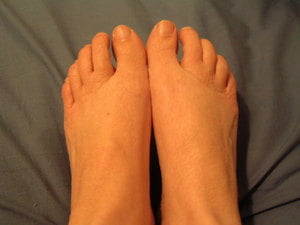I have a son who was diagnosed as a type one diabetic when he was 12. He is now in his twenties and in good health. As I learned about his condition, the importance of looking after his feet was impressed on me by several health specialists.
Why are Diabetics Prone to Foot Problems
Diabetes is characterized by an inability of the pancreas to produce insulin. This means that sugar cannot be converted into energy in the body. If the condition is not controlled by the regular administration of insulin, high sugar levels can cause damage to the blood vessels in hands and feet.
Foot Problems Associated with Diabetes
Diabetes can cause a number of problems with feet:
• Peripheral neuropathy is the gradual loss of nerve function in the extremities, especially the feet. It is characterized by a loss of sensation, tingling in the feet and legs and numbness and pain.
• Diabetics often suffer from narrowing of arteries which decreases circulation to the feet. Poor circulation can affect the rate at which minor cuts, bruises and burns to the feet heal
• If diabetics develop neuropathy in their feet and lose feeling, they may not notice minor injuries and calluses and these can develop into neuropathic ulcers
• The combination of poor circulation and infection can cause gangrene
Treatment for Foot Problems in Diabetics
Even with the best care, many diabetics develop foot problems. While there is no cure for some foot conditions, there are ways to reduce the discomfort:
• Good sugar control can help prevent peripheral neuropathy and anti-inflammatory drugs can relieve the symptoms
• Open sores on feet will normally be treated with antibiotic ointment and dressings. In more serious cases, the doctor may recommend weight is kept off the foot by using crutches or a wheelchair
• If the sore is infected, the patient is normally treated with oral antibiotics. Poor circulation may hinder the effects of medication and the doctor may need to clean out the wound surgically
• If gangrene develops, the only way to prevent it from spreading is to remove the dead tissue. If not caught quickly, this can involve toes, the whole foot or even part of the leg
Daily Foot-care for Diabetics
The most important thing a diabetic can do is keep his or her sugar levels under control and exercise on a regular basis. The following are specific things that can be done to keep feet in good condition:
• Check feet daily for blisters, bruises, reddened skin, corns and calluses and ingrown toenails. The underneath of feet can be inspected using a mirror if mobility is a problem
• Wash feet daily but don’t use water that is too hot. Use a mild soap and dry them gently. Use a moisturising lotion but don’t rub this between the toes
• Don’t cross legs while sitting as this can restrict blood flow
• Cut nails straight across with clippers
• Don’t use any corn, callus or wart remover without consulting a doctor
• Wear leather or canvas shoes with cushioned soles and uppers and avoid synthetic socks
• Don’t go barefoot in the garden
If diabetics care for their feet and monitor their condition on a regular basis, they will be able to seek treatment as soon as a problem arises. While there is no cure for some conditions, correct care can often prevent them from occurring.

